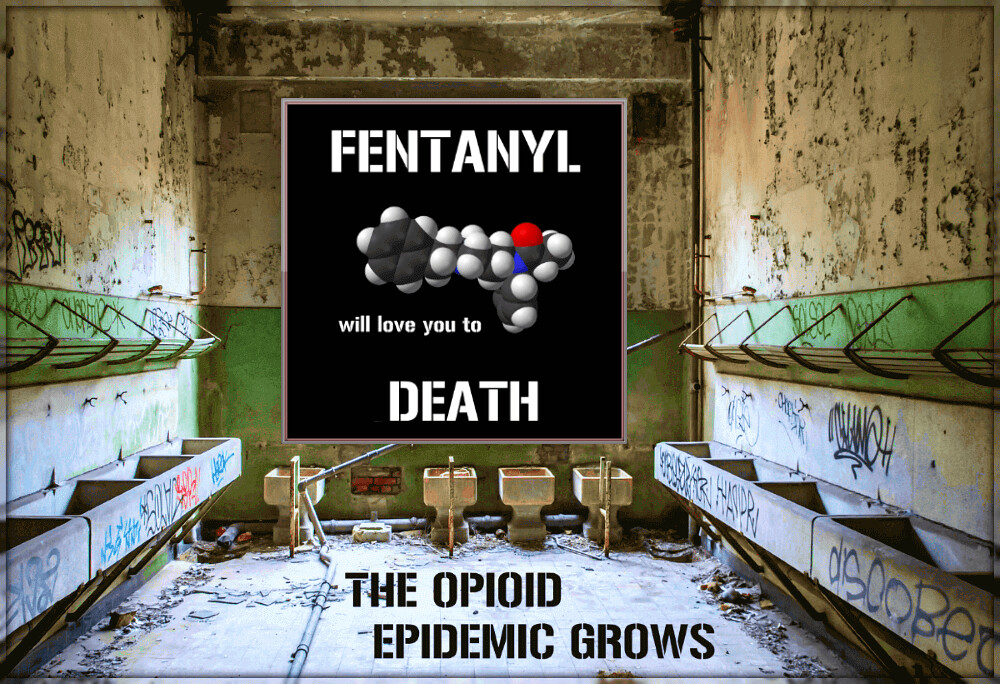Fentanyl: The new opioid epidemic
People are dying from a substance they didn’t know they were ingesting, and it needs to come to an end.
Currently, we are in the third deadly wave of the opioid epidemic. In order to better understand and combat this epidemic, we must first understand how we got to where we are today and what this third wave really means for those struggling with addiction
According to the CDC, “The first wave began with increased prescribing of opioids in the 1990s, the second wave began in 2010, with rapid increases in overdose deaths involving heroin, the third wave began in 2013, with significant increases in overdose deaths involving synthetic opioids, particularly those involving illicitly manufactured fentanyl.”
When people are taking fentanyl legally it is “approved for treating severe pain, typically advanced cancer pain. It is 50 to 100 times more potent than morphine,” according to the CDC. This is part of what makes it so dangerous. It can lead to overdose faster and in lower doses than heroin.
The CDC states that the “most recent cases of fentanyl-related harm, overdose, and death in the U.S. are linked to illegally made fentanyl. It is sold through illegal drug markets for its heroin-like effect. It is often mixed with heroin and/or cocaine as a combination product — with or without the user’s knowledge — to increase its euphoric effects.”
Essentially, people who sell drugs illegally are often lacing the substances they sell with fentanyl because it makes the high stronger.
According to Dr. Volkow, the director of the National Institute on Drug Abuse, in a 2021 New York Times article, these drugs are being laced because the fentanyl makes it stronger for cheaper and explains “that more deaths than ever involved drug combinations, typically of fentanyl or heroin with stimulants.”
Volkow points out that “ … someone who’s addicted to a stimulant drug like cocaine or methamphetamine is not tolerant to opioids, which means they are going to be at high risk of overdose if they get a stimulant drug that’s laced with an opioid like fentanyl.”
Many people do not realize how dangerous fentanyl really is. “The lethal dose of fentanyl is generally stated to be 2 milligrams … there are approximately 28.35 grams to an ounce,” as stated on oxfordtreatment.com in a 2021 article about lethal dosages on fentanyl. To give you a visual, it looks like a very small pinch of salt.
These deaths continued to happen and even rose during COVID-19. In their 2021 Commonwealth Fund article, Jesse C. Baumgartner and David C. Radley stated that deaths began hitting record levels shortly after the pandemic took its hold on the U.S.
They explained that these numbers grew monthly “by about 50 percent between February and May to more than 9,000; they were likely still around 8,000 in August. Prior to 2020, U.S. monthly overdose deaths had never risen above 6,300.”
The two went on to point out that the main contributor of this increase can be attributed to opiod use “specifically synthetic opioids such as fentanyl. Opioids accounted for around 75 percent of all overdose deaths during the early months of the pandemic; around 80 percent of those included synthetic opioids.”
Not only does this show that people with substance use were greatly impacted by the stresses of COVID-19, but also that for some of these individuals the cause of their deaths were not from the original drug itself, it was the fentanyl it was laced with.
The CDC recently published an interactive visualization tool with preliminary weekly estimates of overdose deaths. This data suggest that overdose deaths remained elevated well into the fall before declining toward the pre-pandemic baseline near the beginning of 2021.
The final 2020 total in the United States could exceed 90,000 overdose deaths, compared to 70,630 in 2019. Which would not only be the highest annual number on record, but the largest single-year percentage increase in the past 20 years.
Knowing that people are dying from something they didn’t even know they were using and knowing that the number is continuing to rise is heartbreaking. What is needed is more support for individuals who are using drugs and get them the help that they need, such as better access to treatment centers.
We need to provide access to testing strips that are designed to test for fentanyl, we need to conduct investigations with individuals who are trained in illegal drug cases to go into these deaths and find out where these laced drugs are coming from and to put a stop to the selling of substances that are unknowingly playing a game of Russian roulette with their lives.
If you or someone you know needs help with substance use go to www.samhsa.gov/find-help/national-helpline or call 1-800-662-HELP (4357) it is a confidential, free 24/7 information service that provides referrals to local treatment facilities, support groups and community-based organizations.



